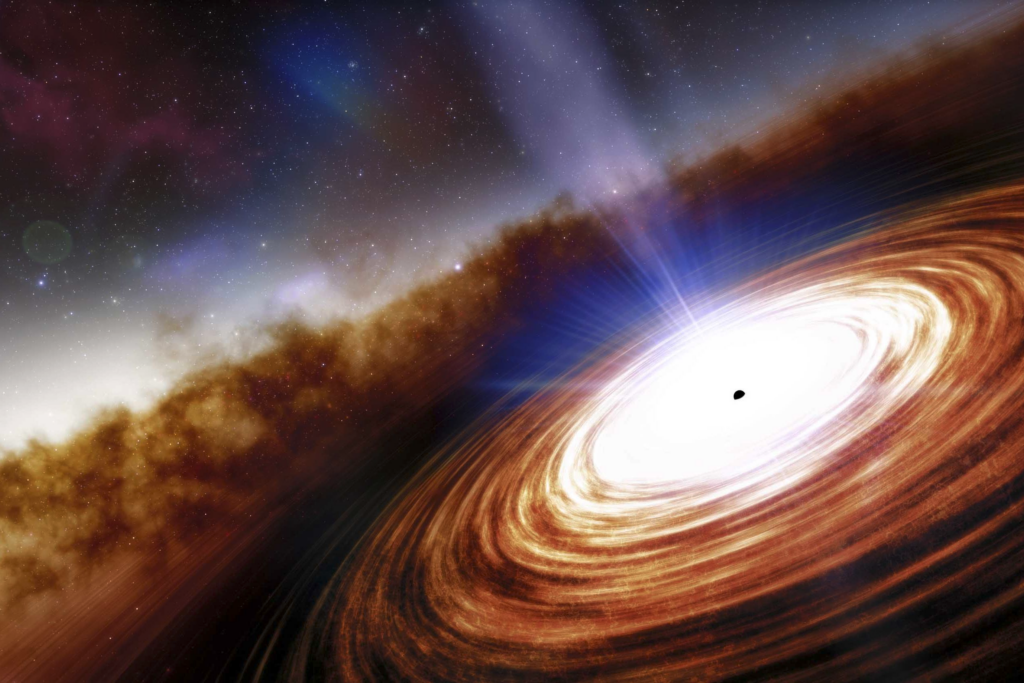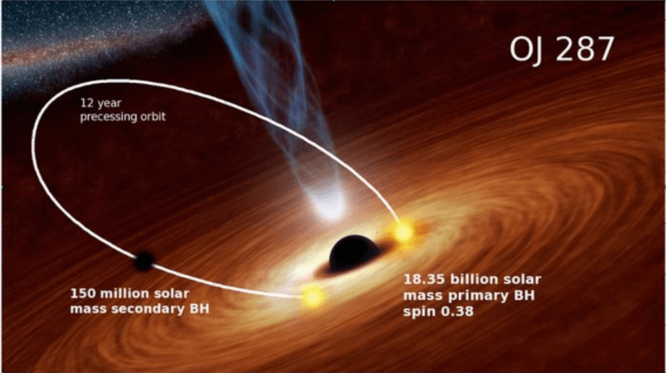Astronomers have seen the blazar OJ 287’s smaller supermassive black hole (SMBH) emit light for the first time. Astronomers have watched the pair’s dance for decades, but this is the first light suspected to originate from the smaller black hole’s direct emissions.
Since 1888, OJ 287 has intrigued astronomers. The smaller black hole circles the larger one every 12 years, and its orbit angle leads it to pass through the accretion disk twice, unleashing bursts of light that last around two weeks.
A transient brilliant flash beyond the galaxy’s cycle showed something odd. Finnish and Indian astronomers explain the discoveries in a new study.
Most galaxies have SMBH cores. Black holes circle one other in an ever-tightening dance until merging when galaxies combine. We can witness the radiation from these interactions when black holes approach in approximately a dozen situations.
OJ287 is a nearby example at five billion years. SMBHs are also exceptionally near.
The huge SMBH, estimated at 18 billion solar masses, is 4,000 times more massive than the one in the center of our galaxy and a fifth of the biggest known.

This makes the system one of the few that can detect gravitational waves from their mutual orbits, but it prohibits us from resolving the two objects’ disks separately.
Aimo Sillanpää of Finland’s University of Turku identified two flash cycles for his PhD 40 years ago. The smaller SMBH orbits the bigger one every 12 years, with two outbursts a cycle when it passes through the primary’s accretion disk, heating it sufficiently to brighten.
Like Earth’s orbit, which steadily stretches and shrinks, the longer cycle affects the orbit’s orientation relative to the disk. Sillanpää anticipated OJ 287’s 1983 largest flare based on this. The smaller hole’s gravity has deformed the larger hole’s accretion disk, complicating computations. However, model refining allows forecasts within a few hours.
OJ287’s early 2022 flash didn’t follow Sillanpää’s pattern because the regular bursts had happened in 2015 and 2019. Sillanpää and 26 co-authors credit the out-of-sequence eruption to the smaller SMBH, which swallowed additional gas as it passed through the bigger hole’s disk.
“The swallowing process causes the sudden brightening of OJ287,” stated lead scientist Professor Mauri Valtonen of the University of Turku. This mechanism may have boosted OJ 287’s tiny black hole’s jet. This was anticipated 10 years ago but not proven until today.”
Valtonen claims out-of-cycle eruptions like these have happened before but were undetected since they last barely a day. Astronomers have monitored OJ 287 intermittently since 1970, although brief flashes can be overlooked. The Spitzer telescope’s trailing orbit revealed the 2019 extended brightening, which was undetectable from Earth because to the Sun.

